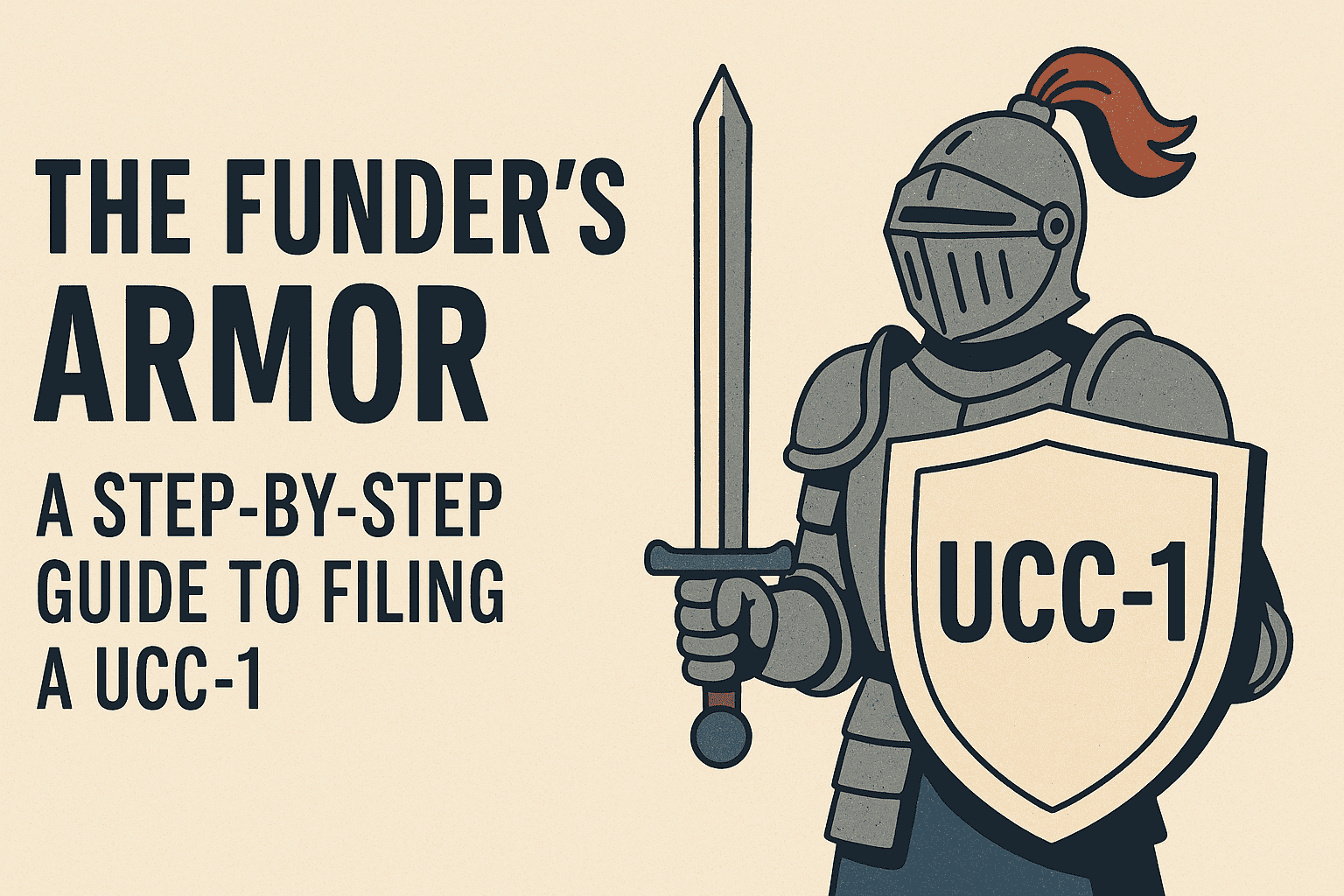
The Funder’s Armor: A Step-by-Step Guide to Filing a UCC-1
In the Merchant Cash Advance industry, speed is king, but security is the kingdom. While providing rapid funding is our core value proposition, protecting that investment is what ensures long-term viability. The single most important tool for this protection is the Uniform Commercial Code (UCC) financing statement, commonly known as the UCC-1.
A UCC-1 is a legal notice filed with a state’s records office to publicly declare that a funder has a security interest in a merchant’s assets. For an MCA provider, this typically means a claim on the future receivables you’ve purchased. Filing a UCC-1 “perfects” your security interest, establishing your priority to collect against other creditors if the merchant defaults or files for bankruptcy. Neglecting this step or doing it incorrectly can be a costly mistake, potentially putting you at the back of the line for repayment.
This guide provides a clear, step-by-step process for filing a UCC-1 correctly to secure your position.
Step 1: Gather Flawless Information
The effectiveness of a UCC-1 filing hinges entirely on the accuracy of the information it contains. Even minor errors can render the filing “seriously misleading” and legally ineffective. Before you begin, you must have the following details, and they must be perfect:
- The Debtor’s Exact Legal Name: This is the most critical piece of information. It is not the “doing business as” (DBA) name.
- For a registered organization (like a corporation or LLC), the name must match exactly what is on its public organic record, such as the articles of incorporation filed with the state.
- For an individual (like a sole proprietor), the name must match their unexpired, state-issued driver’s license or identification card.
- The Debtor’s Address: Provide the correct mailing address for the individual or business entity.
- The Secured Party’s Information: This is your information as the funder. Include your organization’s legal name and mailing address.
- A Description of the Collateral: This section details the assets your security interest covers. For MCAs, this is often a “blanket lien” that covers a broad range of assets, not just a specific piece of equipment. A common description might be “all accounts, chattel paper, deposit accounts, general intangibles, and future receivables.” Be specific enough to be clear but broad enough to protect your interest. Avoid vague terms like “all assets” without further detail.
Step 2: Determine Where to File
A UCC-1 must be filed in the correct jurisdiction to be valid. The rule is based on the debtor’s location, not the collateral’s location or your location.
- For a Registered Organization (Corporation, LLC, etc.): The filing location is the central filing office (usually the Secretary of State) in the state where the entity is incorporated or organized.
- For an Individual or Sole Proprietor: The filing location is the central filing office in their state of residence.
Each state maintains a UCC filing office, typically within the Secretary of State’s office. You can find a directory of these offices online.
Step 3: Complete and Submit the UCC-1 Form
Once you have the correct information and know where to file, you can complete the financing statement.
- Get the Right Form: While there is a national UCC-1 form, some states require their own specific version. Always check the requirements of the jurisdiction where you are filing to ensure you are using the correct and most current form.
- Fill Out the Form Carefully: Transcribe the information you gathered in Step 1 onto the form. Do not use abbreviations unless they are part of the legal name. Double-check every field for typos.
- File the Form: Most states now encourage or mandate electronic filing through their Secretary of State’s online portal. This is the fastest and most reliable method. Paper filings by mail or fax are still available in some states but can take much longer to process.
- Pay the Filing Fee: A fee is required to file a UCC-1. The amount varies by state and filing method (online is often cheaper).
Check UCC-1 Portal map for a list of state-specific filing portals and requirements.
Step 4: Manage the Filing’s Lifecycle
A UCC-1 filing is not a “set it and forget it” document. It has a limited lifespan and may need to be amended.
- Duration: A UCC-1 filing is effective for five years from the date of filing.
- Continuation: If the merchant’s repayment obligation extends beyond five years, you must file a UCC-3 Continuation statement to extend the effectiveness of your lien for another five years. This must be filed within the six-month window before the original filing expires.
- Termination: Once the merchant has fully satisfied their obligation, you should file a UCC-3 Termination to release the lien on their assets. This is a critical step for maintaining good relationships and allows the merchant to seek future financing without issue.
By following these steps with precision, you can effectively use the UCC-1 filing as it was intended: as a powerful tool to secure your investment and protect your position in the competitive world of merchant cash advances.
Ready to Transform Your Workflow?
Schedule a demo to see how ExaThinkLabs can streamline your document analysis process.
Schedule a personalized demo today to see how Exathinklabs can help you escape the document deluge and unlock new levels of efficiency and accuracy.